All Posts > Leafy Greens > Perennials > Plant Profiles > Vegetables
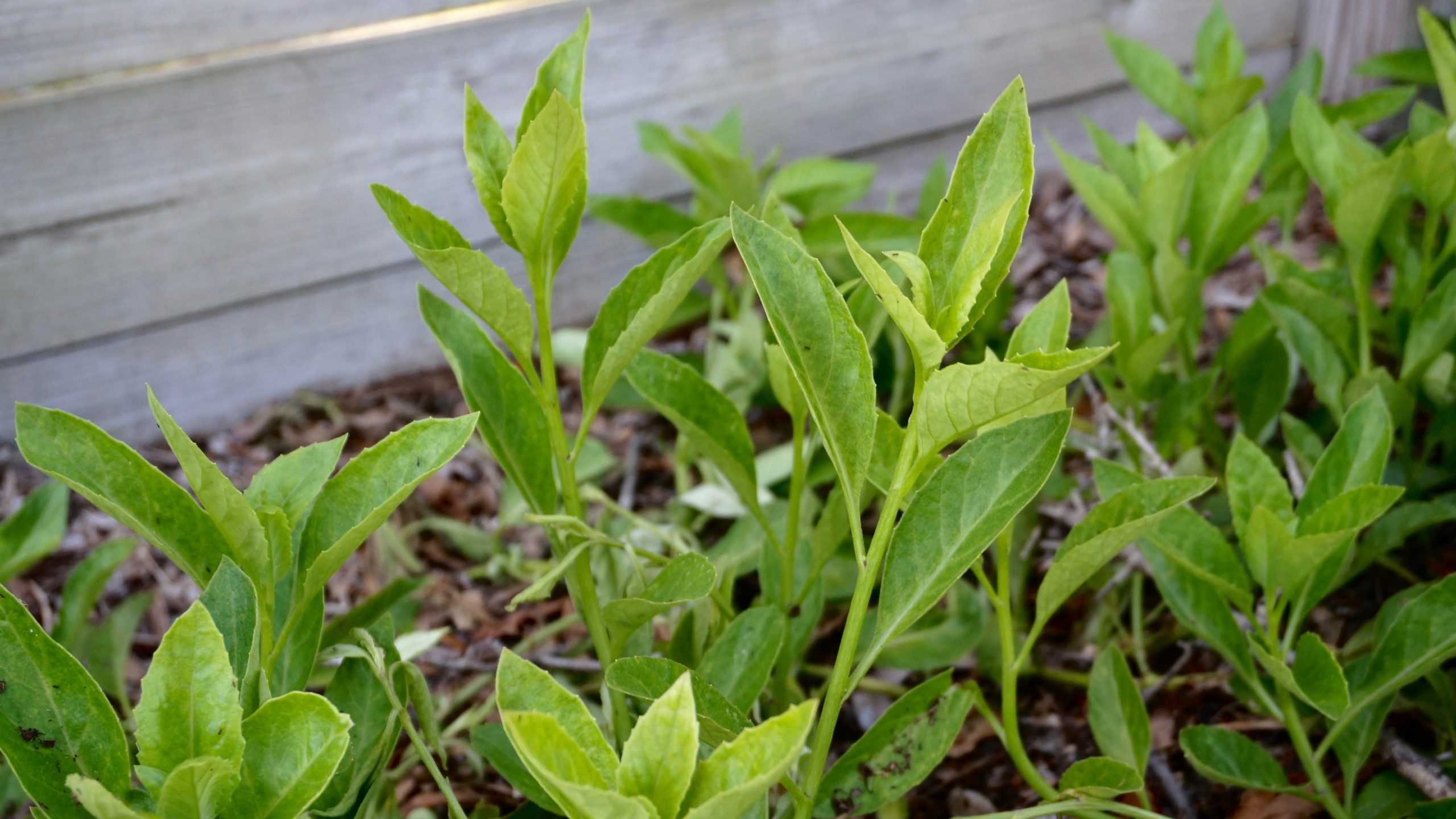
Introducing the Longevity Spinach
Longevity spinach is a tropical trailing plant with edible leaves. The plant is also called “Sabuñgai” or “Sambung Nyawa.” It belongs to the Asteraceae family and is native to Southeast Asia. Gardeners in different tropical regions across the world grow this plant, and recently it has gained popularity with U.S. gardeners.

Longevity spinach stem with roots growing all along the stem.
Growth Habit of Plant
The longevity spinach is a perennial trailing vine. The stems are green and snap easily when bent. As the plant gets older the base becomes thicker and turns brown in color. The leaves have an opposite pattern and the older ones can reach around 6 inches long. The edge of the leaves has insignificant serrations that are barely noticeable. As the stem trails along the ground roots will grow into the soil from any part of the stem. Due to this, I think the plant makes a great ground cover.
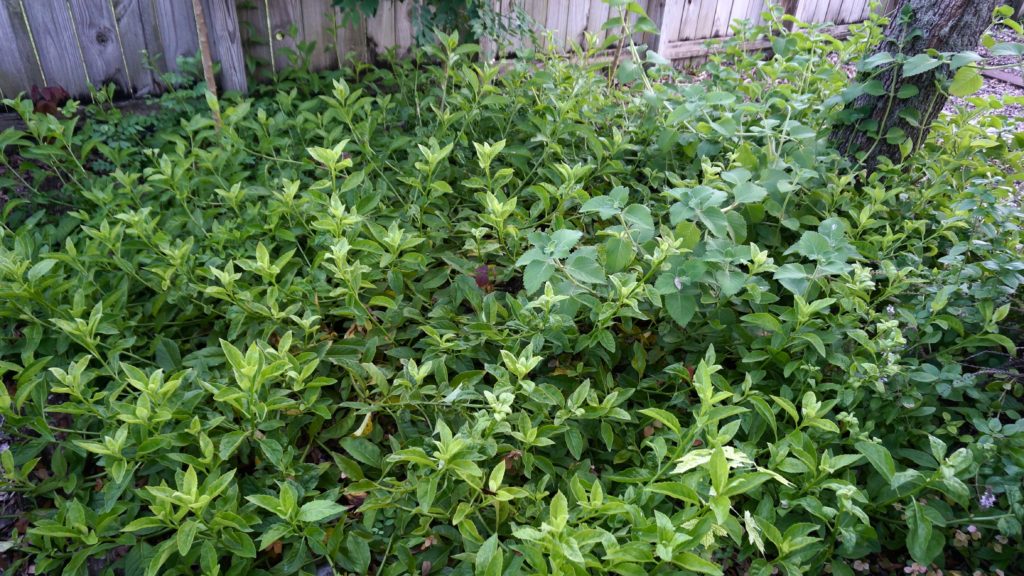
Longevity spinach growing as a ground cover in a mini food forest.
If the plant is left to trail along the ground it will only reach a height of 1-2 feet and the stems itself will grow 15-20 feet long. If there are nearby supports the stems might rest on them, but it will not reach a great height on a support without help. In South Florida, the spinach grows incredibly fast during the warmer months, but during the cooler months the growth is quite slow. Pruning your longevity spinach plant can be beneficial when the growth is so vigorous. I have also pruned all the stems from my plants before and the plant regrows very well.
Growth Habit of Flower and Fruit
I have yet to see my longevity spinach plants flower. However, they do apparently produce orange blooms during the cooler months in Florida. I do not know if this plant produces fruit with viable seeds or wether it is dioecious or monoecious. If you know more about this I’d very much appreciate a comment elaborating on the flowers and fruit of the longevity spinach.
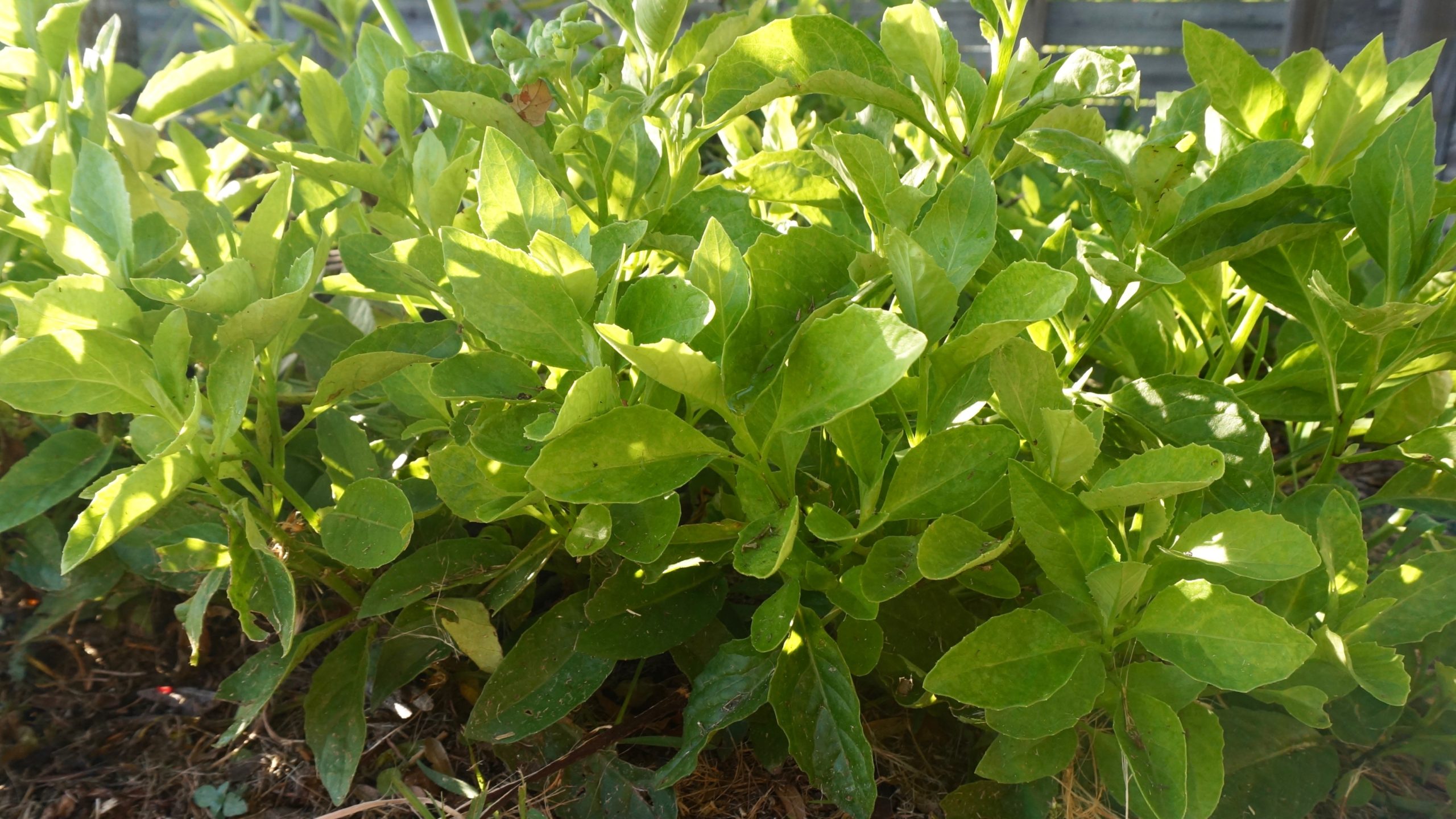
Growing Conditions
This perennial leafy green is a tropical plant, growing best in zones 9-11, and therefore is not cold hardy. It prefers fertile soil that is kept moist. It can grow well in full sun to part shade, which makes it a great ground cover plant for a food forest understory. The longevity spinach is incredibly vigerous here in South Florida and needs little to no care. I have not tried it myself, but I believe it can do well in a pot if the plant is kept small through pruning. Some people prefer to grow longevity spinach up a support, and that can be done by tying the plant to the support. However, I personally feel if you have the space it is much easier to grow this plant as a ground cover instead.

Gardeners in colder climates can grow this plant as an annual. When the weather starts getting colder you can take cuttings, root them in pots, and bring the plants indoors. Once the weather is warm enough you can plant the spinach outside in the ground. I am not sure, but I think that it might be possible to grow this plant as a perennial in cool regions where the ground doesn’t freeze. I have seen longevity spinach grow back from only one small rooted stem that was left in the ground. With adequate insulation, provided by mulch or something similar) the stems could survive a mild winter, and the plants could grow back during the summer.
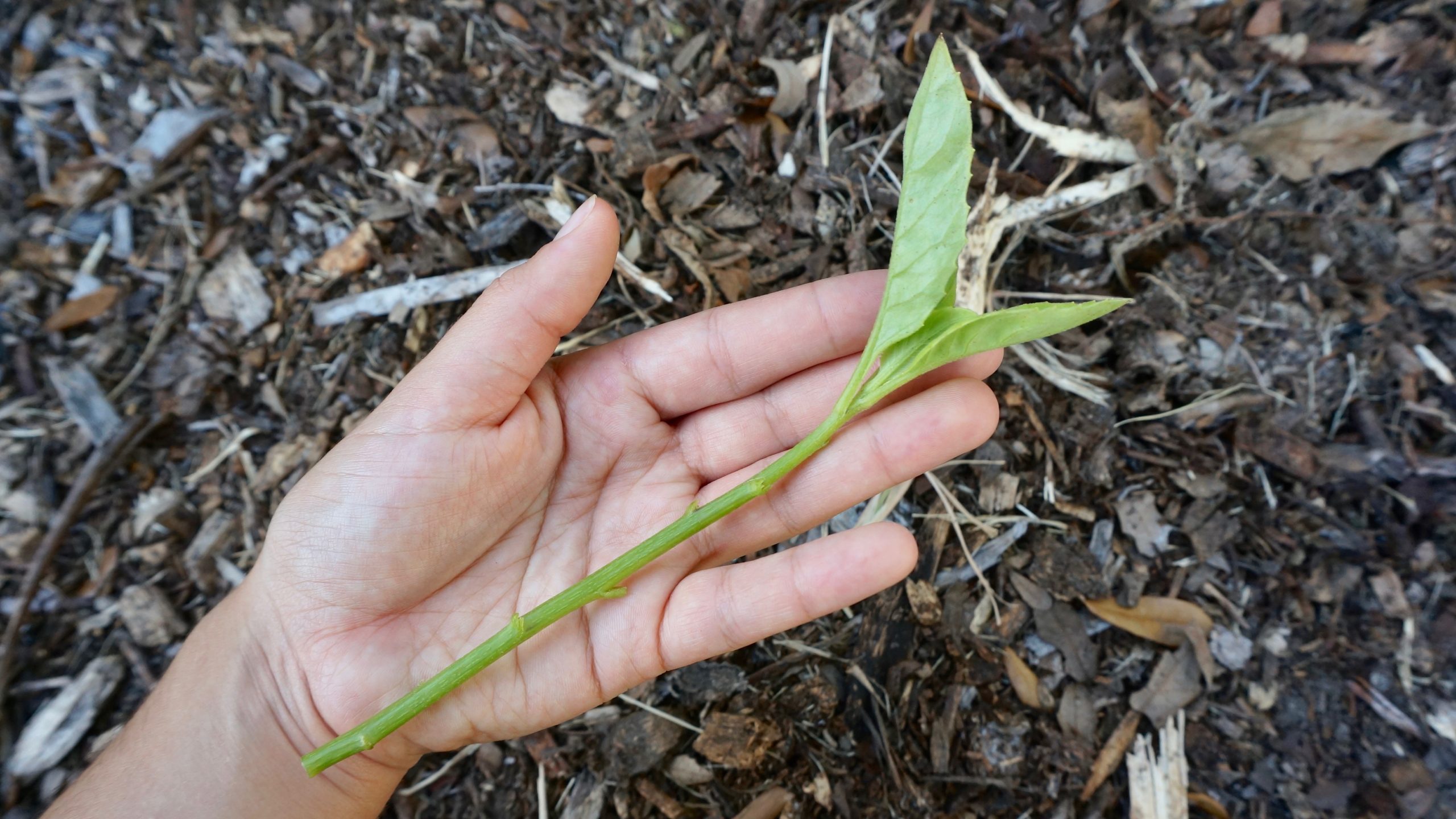
A cutting of longevity spinach with leaves removed and ready to plant.
Propagation of Longevity Spinach
I have no knowledge of longevity spinach being propagated sexually because I am not sure if the plant even produces seeds. To propagate this spinach asexually you can take cuttings from the plant and root them in water or soil. I am not sure wether younger or older stems are best for cuttings. The second option is to take a rooted stem from an established plant and then plant it in another location. With the second option the plant will be established much quicker since there are already roots present.
Pests
I have experienced very minor pest issues with my longevity spinach plants. There has been insect damage to the leaves before, which I believe is due to beetles eating the leaves at night. I have also seen some aphids on stressed plants. Lack of airflow can be an issue when growing it as a ground cover, which can promote fungal growth. If you find fungal growth then you can prune your plant back and let it regrow. As it regrows you might need to prune it to prevent the plant from becoming so dense again.
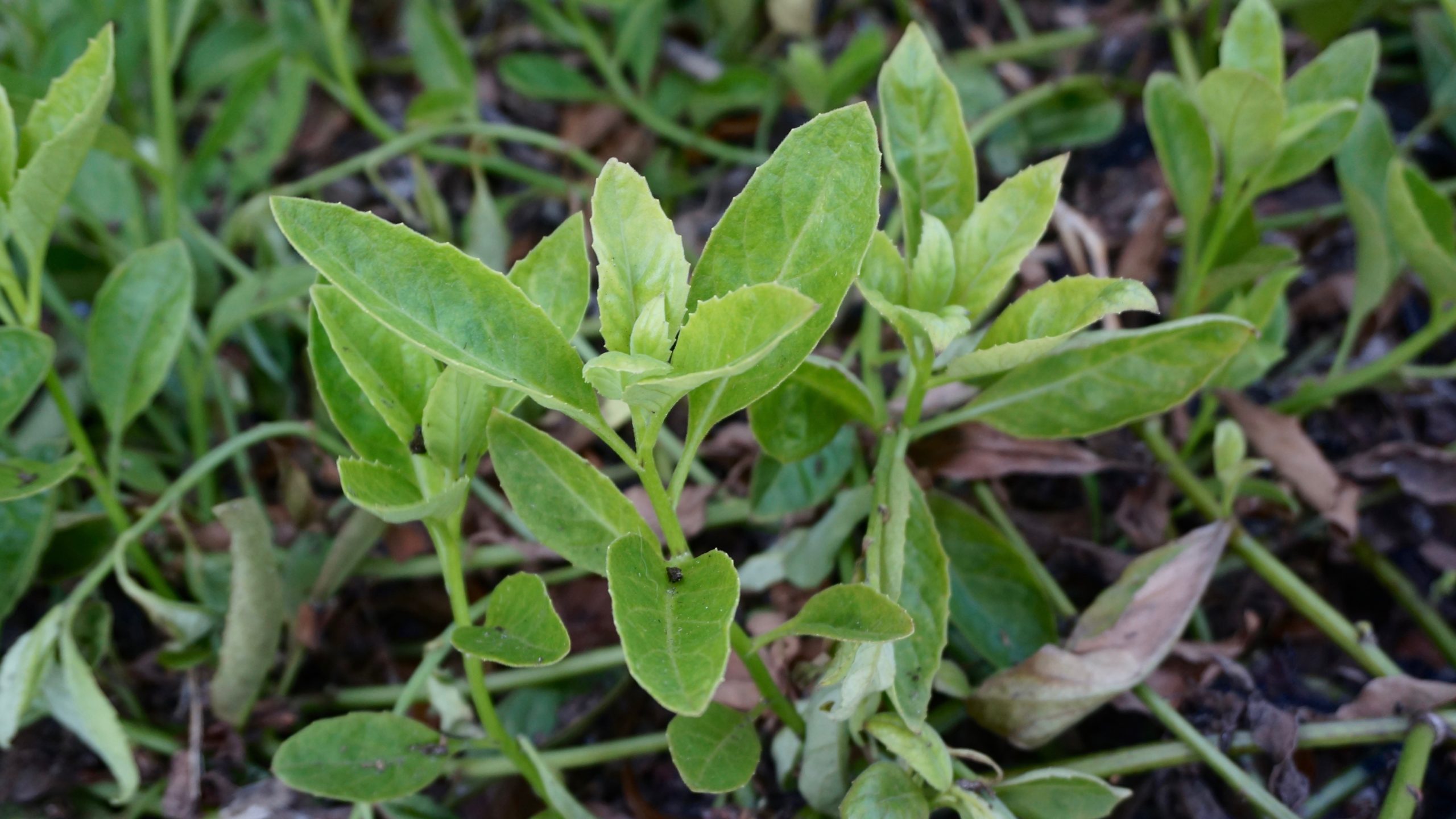
In this image you can see the insignificant serrations on the leaves.
Uses for Longevity Spinach
Harvesting can be done while simultaneously pruning your plant. Your first option is to pinch off the tips of the stems for tender leaves. This type of harvesting encourages lateral stems to grow. Your second option is to prune off a long stem and then remove the mature leaves off of that stem. I personally prefer the first option because it is easier and encourages new growth.
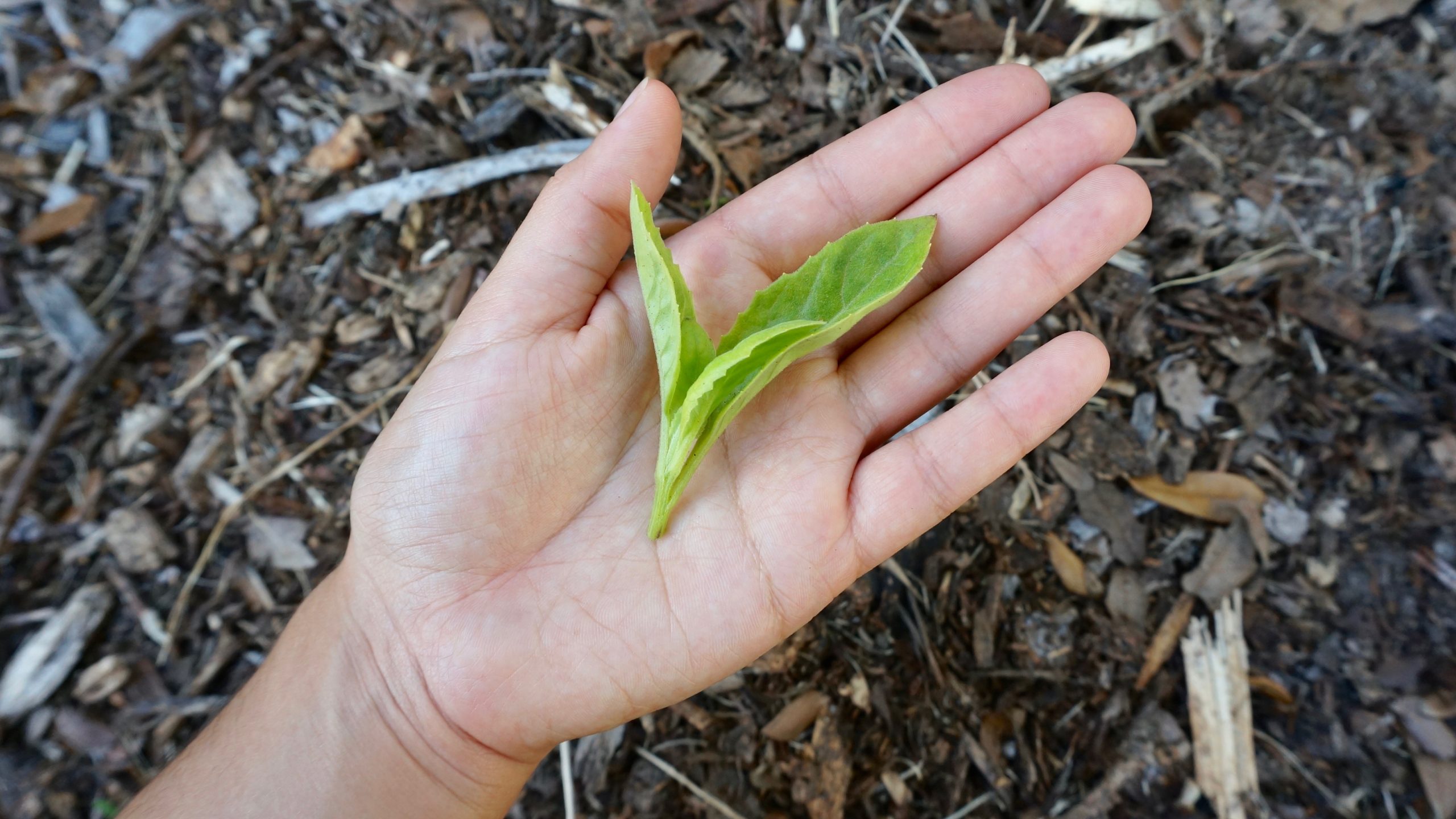
Example of longevity spinach harvest from pinching off the tips of the stems.
The leaves can be eaten raw or cooked, and young stems can be eaten cooked. If you are eating it raw it is best to eat the young leaves since they are tender. To cook longevity spinach you can steam, boil, or sauté it. The leaves hold their shape and texture well after being cooked. Personally, I find the flavor of this green to be a bit strong, so I find it is best to add it to soups. I have also juiced longevity spinach leaves and frozen the juice in an ice tray. Once frozen, I stored the blocks in a container and would add the frozen juice to smoothies.
Have you had the chance to eat longevity spinach? Are you growing this plant already? Let me know down below in the comments! You can learn more about other perennial leafy greens here and below you can watch a video of my garden where I had longevity spinach growing. Here you can purchase seeds for different tropical plants.
I have a cutting of longevity spinach from a friend who recommended it, what nutrients does it provide (ie: vitamin c?)
Will deer eat it?
Hello
I am wondering if its safe to use the stems in a smoothy using a blender with abit of apple juice
Grace and peace to you!!
"My" longevity spinach started blooming a couple of days ago. I live in Orlando, FL. It was planted early last growing season, so it is near a year old.
Great to hear! I have not seen mine flower yet. Maybe it needs a bit of cold temps to flower.
Thank you!
I grow young gynura plants from stem cuttings. Can you tell how high should be plant to start pinching the top leaves? Or when is it time to start pinching the leaves?
They grow quite fast and they can handle some heavy pruning. When the plants have stems at least a foot long I would say it's okay to pinch off a few leaves or to pinch the tips off. Pinching the tips off will cause it to branch out and will give you a bushier plant.
Where can I get longevity spinach in South Florida? A reliable place, where I know no chemicals have been used? I guess you can't buy seeds or where do you get the plants? I live in Davie. Thank you for whatever info you can give me.
You can order cuttings online or plants. Try searching for "longevity spinach cuttings" "longevity spinach plant" on eBay or Etsy. As for nurseries in South Florida try contacting ready-to-grow-gardens in Miami. They might have them or direct you to a nursery that does.
Hello .. yes it dos make seeds much like a dandelion small at the base ..fluff at the top .. I am trying to start the seeds now I will update 1-15-2021
That is great to know. Thank you for sharing!
Thanks so much Melanie! I have to agree, the flavor is a bit too strong to eat a lot raw. I snuck it into a cooked dish, no one could tell. And you're right, it has been pretty easy to grow, currently holding its ground on the North side of a fence that gets very little sun in the winter as well as in a semi-shaded pot outside. We've been in the mid- to upper 30s at night lately, so hopefully it will survive when we get one of our rare frosts this winter. Thanks again and looking forward to some groundcover action in the Spring!
I am glad to hear it is doing well for you. I hope it survived the winter months. You can try taking some cuttings and putting in a pot that you can put in a shed, garage or indoors when the weather gets colder. That way you have a back up plant just in case. They are very easy to start from cuttings.
Thank you! I really enjoyed your description and pictures of how g. procumbens grows. Based upon your post, I will also plan on growing this as a ground cover. (Hopefully it will do ok. I am in zone 10a in the San Francisco bay area) I was wondering, do you often eat this plant? I took a small leaf off a new plant to try and thought that it would be good in a stir fry, but it seems like most people post that they eat only several leaves at a time, which doesn't seem like enough for a dish. Keep up the great work!
I am glad you liked the post. This plant should grow well in your area of zone 10a. However, I think you might need to irrigate it since California has a drier climate than Florida. We get a good amount of rain here so I don't water it and it still does well. I actually do not really eat this plant since I do not like the taste of it. I think it would be fine to add the leaves to a stir fry. Go for it! 🙂 Katuk, which is another tropical leafy green, is known to have some toxic components and it is recommended to only eat the plant in moderation. My definition of a lot would be eating the leaves everyday and in large quantities. If one were to apply the same logic to longevity spinach then it should be safe to eat the cooked leaves in a stir fry every now and then.
I’ve heard that it’s high in protein. Do you know the nutritional information?
Sorry, I am not fully sure of the nutritional content of longevity spinach.